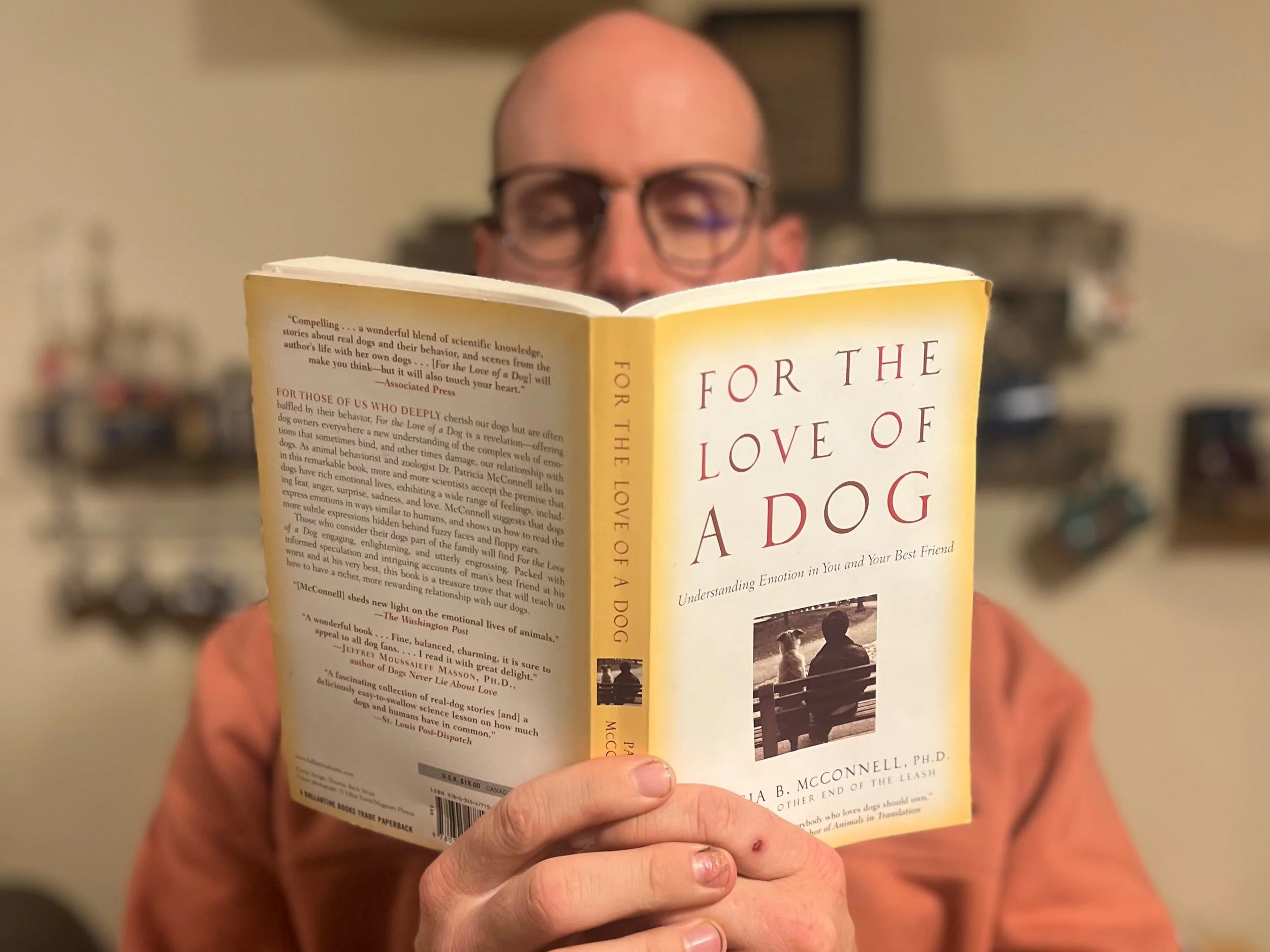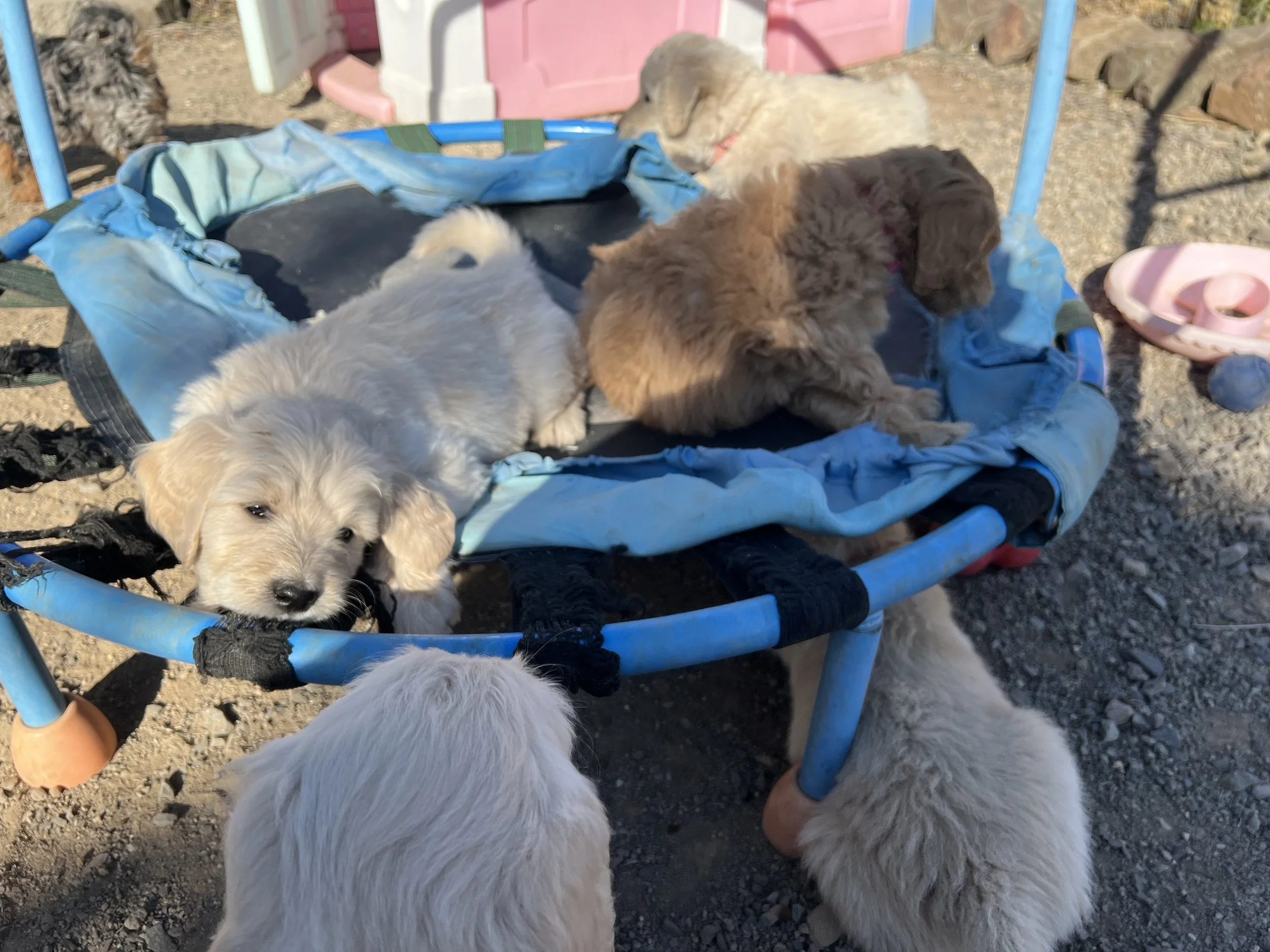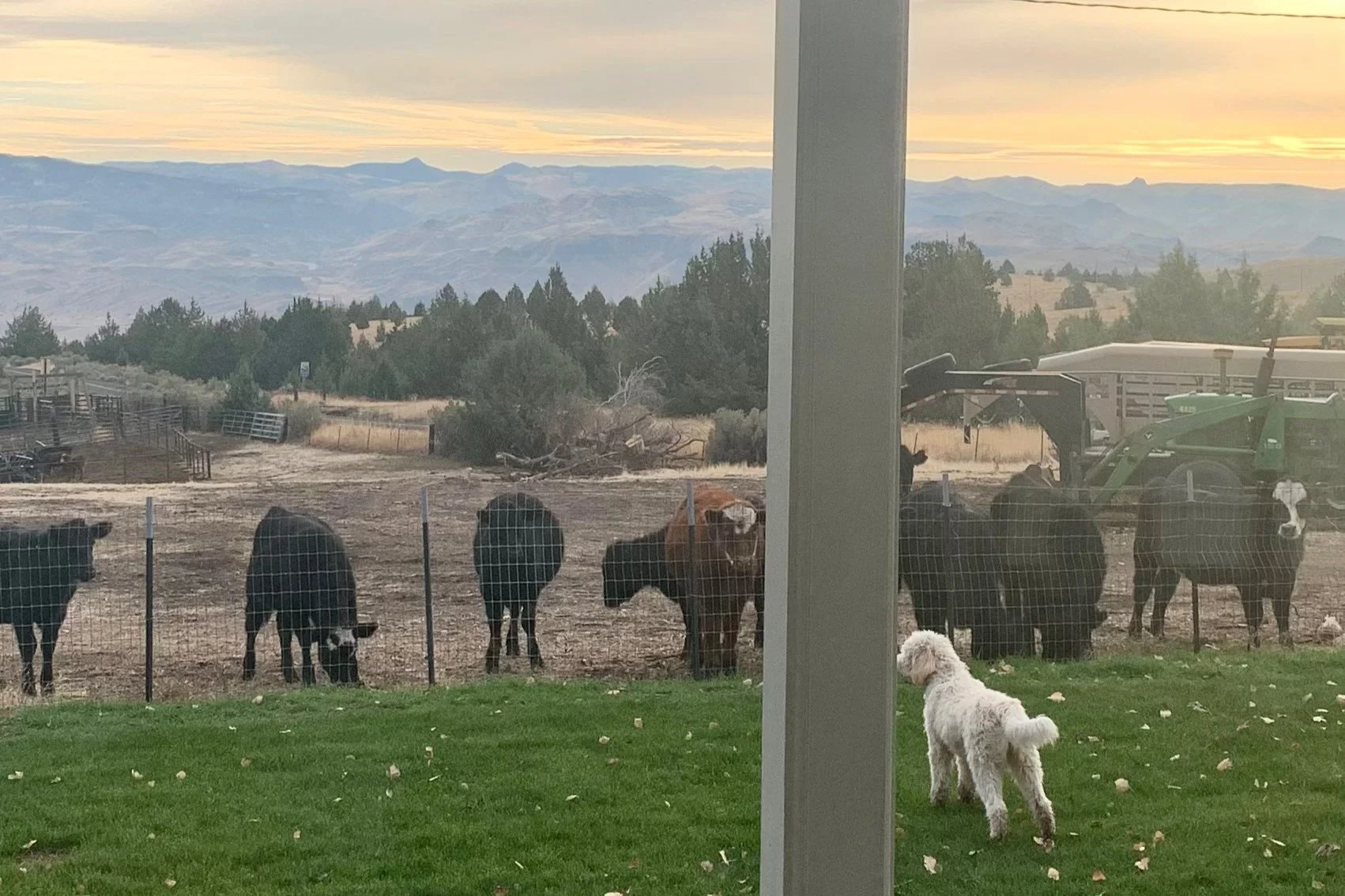Understanding Your Dog in “For the Love of a Dog”
We at High Desert Family Doodles are on a continual quest to learn. We want to understand the intimate connection between us and our Goldendoodles and Bernedoodles. As breeders, we want to do all we can to breed, raise, and nurture healthy and confident Goldendoodle and Bernedoodle puppies. There is so much information out and about, so we love following recommendations about professionals and information that can help us on this quest. We recently came across Dr. Patricia B. McConnell’s For the Love of a Dog: Understanding Emotion in You and Your Best Friend, and feel like this book is a tremendous resource for any dog owner who is hoping to better understand their dog, and how to care for them better.
Dr. Patricia’s credentials are immaculate: at the time of the book’s publishing, she was an associate professor of Zoology at University of Wisconsin-Madison, and is a certified Applied Animal Behaviorist. She also has extensive experience with a wide array of other animals, and operates a farm that can aid in the rehabilitating animals. She has spent decades striving to understand animals better, and help them become a better version of themselves. She’s published a few other books, but in For the Love of a Dog, Dr Patricia aims to help us understand our dog’s “emotions” - which is even a bit of a loaded statement - in order to relate to them better, and help them grow as healthy as we can.
This books is full of incredible insights about our dogs, ranging from neurological development, to nonverbal communication, to dog PTSD. In order to help parse through all these incredible dog insights, we’ve come up with a list of the top 3 takeaways for our Goldendoodles and Bernedoodles. So without further delay, here are the top 5 takeaways for us from For the Love of the Dog.
Oregon Bernedoodle Yose is Saying Something with Her Face Right now; what is it?
Like Humans, Dogs Communicate through Expression and Posture
While the human distinction of verbal and non-verbal communication doesn’t translate to human-canine communication, dogs do communicate through facial expressions and body postures. Dogs tend to express emotions and moods in relatively similar ways that transcend breed and gender, which is very similar to how people across cultures and locations can tend to express happiness through smiling.
In light of this canine trait, we can become much better at reading dogs - particularly strange dogs - through familiarizing ourselves with these cues. One common example of this is the connection between a wagging tail and a happy dog. Another common interpretation of dog posture/expression is that a dog shows its teeth is threatening. However, this invites caution because these can also be oversimplifications. A dog’s wagging tail can also communicate stimulation and excitability, so if the rest of the dog seems tense and highly alert, it may be a sign to proceed with caution to de-escalate the situation. Our goldendoodle Honey commonly shows this posture when she meets new dogs, so we are intentional in those situations to help with the dog’s excitability level. Additionally, when a dog’s shows their teeth, it may be a sign of nervousness and anxiety, instead of anger. In fact, Dr. McConnell warns about a different particular posture that could be even more ominous.
This posture is when a dog has an alert body, closed mouth, and “hard eyes”. While it could be easy to not notice this posture, she discusses how this posture can make her wary as a precursor to a dog bite. Dr. McConnell focuses on this posture because of the latent threat that can commonly exist behind a placid posture.
So Many Goldendoodle Puppy Eyes in Central Oregon, and They Look Calm and Relaxed
A Dog’s Eyes Communicate
Dr. McConnell spends a lot of time focusing on how much a dog’s eyes communicate. While these organs make up such a small portion of the dog’s body, they can serve as immense tools to discern what the dog is trying to communicate. However, there is a certain level to understanding the eyes that is an art, not a science. Reading a dog’s eyes might even seem to fall into the realm of intuiting, where our sub-conscious picks up on particular characteristics or traits that our conscious mind isn’t aware of. I think the saying from the Bible that “the eyes are the lamp of the body” rings true for dogs along with humans. McConnell spends a lot of time discussing the concept of “hard eyes”, because of the risk of harm that can lie behind a rather cool manifestation. She compares this hard-eyes stare with that of a human sociopath or malevolent individual which can chill us to the bone. In this situation, we can struggle to explain why we feel such a dread or anxiety in the face of this stare, but we can still feel it.
According to Dr. McConnell, the same goes for dogs. We can leverage our intuition when it comes to reading a dog’s eyes, which in turn are key to understanding a dog’s mood.
Young Goldendoodle Puppies getting Early Exposure in Bend, Oregon.
The Role of Early Exposure and Socialization For Puppies
Throughout “For The Love of a Dog”, Dr. McConnell stresses that a puppy’s early experiences in life has an incredible impact on their development and future trajectory. Like many other resources on raising a puppy, Dr. McConnell particularly highlights the critical period of socialization in puppies, which goes from apps 4-12 weeks of age. During this time, the young puppy’s brain is shaped and sculpted as it quickly develops through the interaction with the world. It’s highly important to not miss this critical window of puppy development. Puppies thrive through an experience-rich environment, where they encounter new things, such as sounds, textures, toys, and people.
According to Dr. McConnell, one way to miss this window is for a puppy breeder to focus and sterility and cleanliness in the puppy area to the deficit of diverse experiences. By having a septic space that is clean but potentially devoid of experiential potentiality, the breeder can be unknowingly limiting their puppies’ development by sheltering them. Obviously, sanitation should be a huge priority for anyone rearing puppies. However, the breeder must also blend the importance of introducing extensive novelty to the puppies’ world in order to help socialize and familiarize them with the diverse world around them.
However, breeders and puppy families can swing too far in the the other direction, and negatively impact the puppies by overwhelming them through too much stimulation. If the puppy is faced with an overwhelming noisy, busy, or seemingly unsafe environment, the puppies mind can collapse into a fight/flight mode as the puppy tries to just survive the experience. This in turn can lead to conditioning and trauma which associates components of that experience with stress, threat, and danger. As McConnell says, “a healthy period of development isn’t about any kind of exposure, it’s about exposure that allows puppies to learn about life at the own pace” (131). When socializing and exposing your puppy, your goal should be giving them more positive experiences with diversity that help teach the dog that the world is curious, safe, and trustworthy.
As a breeder or puppy owner, don’t let concern of perfectly navigating this season get in the way of intentionally engaging with this period, because it is so important. As long as you strive to leisurely introduce new things to your puppy during this season, you’re helping to train your puppy’s brain in important ways. That’s because you’re not just teaching them to be socialized/familiar with a particular person or texture, you’re helping to equip your puppy’s brain to successfully integrate novelty throughout the rest of it’s life. As the adage goes, you’re not just giving your dog a fish, but also teaching it to fish -fish on novelty and adaptability - going forward. In a world that is full of diversity, this is an important skill for your dog to have.
Goldendoodle Maple is confidently curious about these Oregon cows. You got this, Maple!
“For the Love of a Dog” Conclusion
This book is full of incredible insights about the what we can know about the emotional and mental lives of dogs, and we were only able to highlight a handful of insights. Dr. McConnell discusses other concepts such as anger in dog, the lasting impact of trauma in dogs, and helpful ways to approach training and correction. Dr. McConnell’s overwhelming care and concern about dogs is palpable on every page of the book. It’s tough to envision a better advocate for the deep connection between us and our dogs, which she has learned through overwhelmingly beautiful, and nauseatingly terrifying experiences with dogs in her life.
If I were to summarize an overarching takeaway from “For the Love of a Dog”, it’s that as dog breeders and owners, it’s both incredibly helpful and refreshingly encouraging to continually grow in our understanding of our dog’s emotional life.
Everyone’s lives are better, and the world is a more beautiful place.






